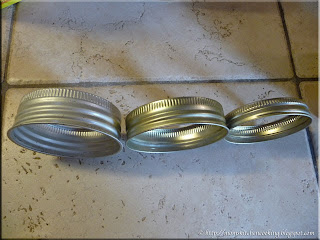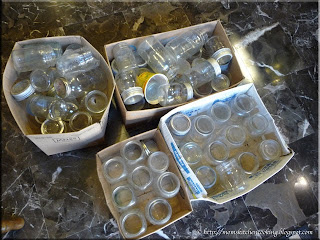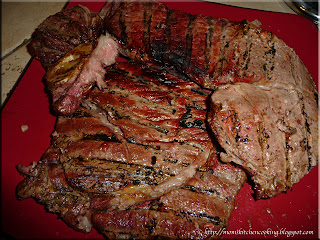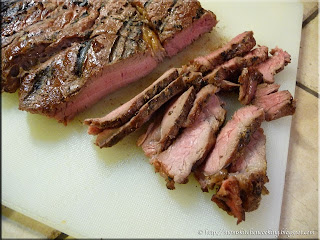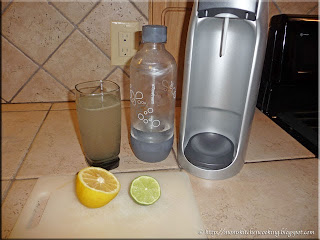I posted yesterday about my wonderful gift of old canning jars. These jars are all quite usable for home canning and I intend to use them as such. I really want to tell you more about the Gem jars, a uniquely Canadian home canning jar but thought I should discuss a few thought on jars and closures first. Before the canning police feel the need to inform me that the old glass jars with zinc lids and rubber seals are not approved by the USDA, I will explain further. First off, the USDA does not approve any home canning product. Instead the USDA makes recommendations based on their testing and it should be noted for a product to be tested by the USDA it costs the manufacturer. So smaller companies like Tattler that make reusable canning lids have not been tested by the USDA simply because of the cost factor.

The 2001 Ball Blue Book says that porcelain lined zinc caps and glass
lids with wire bails requiring rubber gaskets should not be used for
home canning as there is no way to determine if the closure has a safe
seal. Pictured are a few of the jars from my collection that are not in regular use canning that the USDA recommend not using. As you can see from the lid, the porcelain liner is attached to the lid. The lid screws on the jar but there is no gasket that would complete a seal. Honestly, it would be quite difficult to use these jars for canning because the lids are very hard to find and the newer band or even the older deep metal or zinc bands won't fit on them. The other two have the bail and wire closure with gaskets. I'm on the fence about the bail and wire closure as it is fairly close to the Weck canning jars widely used but I think with Weck the wire clips are removed for storage.
In my opinion these jars should be used for display purposes only. First, the jars themselves are old glass so there are flaws such as bubbles and in the case of the smaller back jar with metal cap on it, the seam is rough at the top causing unevenness around the rim. Both types of closures would make it difficult to tell if there is a seal or not because there is no way for the lid to pop off indicating a seal failure. Second, the age of these jars make them antiques. In good condition, complete with caps are worth a bit of money.

Newer versions of the Ball Blue Book has simplified the USDA recommendation to include all
zinc lids with rubber gaskets even though the USDA was referring to the porcelain lined zinc lids as well as the bail and wire closures. This recommendation does not apply to the older glass lids, older glass inserts or newer
plastic discs all which use rubber or silicone gaskets. Essentially these are a two piece
version of the metal snap lids. The USDA recommends against using zinc bands that are used for glass inserts with rubber gaskets.
Pictured are older metal bands (left), older deep standard mouth band
for glass inserts and newer bands for metal snap lids or reusable lids
(centre back) and zinc band (right). The older metal bands are smooth
with the same type of finish as the newer metal bands. These can safely
be used for home canning with glass lids or glass inserts. There are
deeper to accommodate the extra width of the glass lid or insert and the
gasket. The older zinc bands develop a whitish film much like hard
water buildup so they take on a dull greyish appearance as well as a
roughness to the touch. Although the USDA says it is difficult to easily tell if a jar is sealed, which is true of the porcelain lined zinc lids or the bail and wire closures, this does not apply to the glass lids, glass inserts or newer plastic discs.
The USDA recommends the metal snap lids because the manufacturers paid to have them tested. They are relatively easy to use with minimal seal failures and at one time were fairly inexpensive. It is important to note that when the USDA wrote their guidelines, the emphasis was on food safety which still holds true but the concern over availability of the metal snap lids or the fact they were single use was a non-issue. The USDA also was not concerned over the leaching of BPA into food from the plastic lining on the metal snap lids which we now know is a health concern. None of the reusable lids (glass or plastic) have been tested by the USDA so no recommendation has been made. Thousands of home canners are using all three types of lids and the plastic discs are growing increasingly popular. The only difference between these closures and the metal snap lids is the closure becomes a three piece system comprised of lid, gasket and band rather than two (metal lid with sealant, band). If anything, the glass lids, glass inserts and plastic discs (eg.
Tattler,
4ever recap) are safer than the metal snap lids because there is no danger of a false seal that can happen if the centre of the metal lid is pressed before the jar is fully cooled. This will make it appear that the jar is sealed when in fact during storage is will quickly become apparent that it is not sealed. However, the problem arises if the band is left on preventing the lid from popping off the unsealed jar. In contrast, if a jar does not seal using a glass lid, glass insert or plastic disc it is immediately apparent upon removal of the band. The lid will pop right off! bottom line is the USDA recommends the metal two piece snap lids,
recommends against porcelain lined zinc lids and makes no recommendation
with respect to the glass lids, glass inserts or plastic discs all
using rubber gaskets.

If a zinc lid is in good condition, it is suitable for dry storage but be careful as the sharp edges present a cutting hazard. I am only guessing at the reasoning for the USDA's recommendation against zinc lids but to me, the roughness they develop with use could cause seal failures during the canning process. Older zinc lids (left) don't bend up over the lid as much as the slightly newer ones (right) and they can be quite sharp on the edges. It is possible to find some zinc lids that have no bend at all. To the middle right there is an unused zinc lid showing how these lids look before developing the characteristic deposits and roughness.
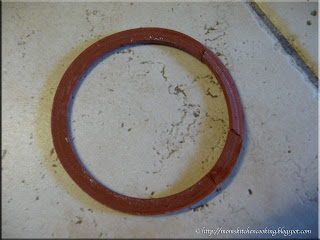
The Ball Blue Book does mention to not use rubber gaskets which if following to the letter would mean you would not use the newer plastic discs (eg. Tattler, 4ever recap). Regardless, there are two primary issues with rubber gaskets, availability and degrading with age. Rubber gaskets are hard to find with the exception of those manufactured by Viceroy in Weston, Ontario. These gaskets fit the older jars with glass lids AND the Canadian Gem jars (78 mm). These rubber gaskets
will not fit the Tattler, 4ever recap or standard (70 mm) mouth glass inserts. These gaskets can be found at Home Hardware in Canada but it is very much on a location basis.
Rubber has the distinct problem of drying out and becoming brittle with age as pictured. This renders the gasket useless for home canning. The
glass inserts that fit the standard mouth (70 mm) jars are vintage as are the rubber gaskets. Any rubber gaskets available are old vintage stock so may already be brittle depending on how they were stored. To date, I have found no source for new gaskets to fit these glass inserts. What this means from a canning perspective is the standard mouth glass inserts will only be useful until the gaskets wear out at which time it is unlikely a replacement will be found although there were sellers on eBay selling the gasket material so you could cut your own.
Now that I've discussed what jar closures should not be used for canning and why I consider the glass lids, glass inserts and plastic discs every bit as safe for home canning as the metal snap lids, I'll make a couple of points about self-sufficiency and being eco-friendly. Glass lids, glass inserts and plastic discs allow the home canner to be less reliant on finding a supply of the single use metal snap lids. At one time these lids were available even in the variety stores but no more. In our small community there are five stores which sounds like a lot but they only carry limited amounts and other than the dollar store the price for a doze is almost $3. The dollar store currently sells them for $1.50 and I have cleaned out their stock on several occasions! That means someone is out of luck until new stock arrive. Outside of the busy canning season, any canning lid supply in town practically dries up. In some areas, canning lids are available by mail order only. Re-usable lids make a lot of sense both in terms of cost and waste reduction while allowing the home canner to take advantage of canning opportunities without worrying about rushing out to buy metal lids. Re-usable is the eco-friendly approach as well. Each time I use a reusable lid I save a lid from going to the curb. Sure, it is the recycle bin but it is still waste that costs to recycle. At my level of canning, I am saving over a thousand lids per year from ending up in the recycle bin! Actually, I also saving that many aluminum cans from ending up in the recycle bin as well but that is another story. Tomorrow I will tell you all about the Gem jars!
















